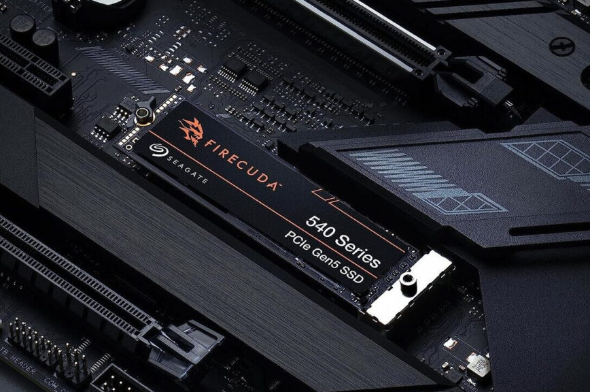Connection to DriversCloud Create a DriversCloud.com account Reset your DriversCloud.com password Account migration
PCI Express 5.0 SSDs are slowly coming into their own
However, we're still a long way from the time when even an entry-level laptop will feature such a storage device.
Since 2019, the PCI Express Gen 5 specifications have been validated by the PCI-SIG, the consortium in charge of defining and approving evolutions to the standard. Even so, few PCs currently owned by users benefit from this technology. It has to be said that consumer products capable of exploiting PCIe Gen 5 only appeared at the end of 2021 from Intel and at the end of last year from AMD. Things are taking time, but developments are finally materializing. PCIe Gen 5 will initially be used for two devices: graphics cards on the one hand, and SSDs on the other. For the former, we're still a long way from seeing products exploiting the said standard, perhaps with the next generation of GPUs from AMD and NVIDIA.
On the other hand, for the past six months, we've been seeing more and more demonstrations of SSDs capable of exploiting PCIe Gen 5. Some manufacturers, such as Corsair and Crucial, have even launched their first models, albeit with relative success. As we've said, the number of compatible SSDs is small. What's more, neither Corsair nor Crucial are household names. A storage giant like Seagate is better known, and could help democratize the technology. The timing is perfect, since product information sheets for the Firecuda 540 SSD have been published - then quickly withdrawn - on Amazon.co.uk and B&H. Both retailers may have been a little hasty, receiving information from Seagate but not being expected to publish it immediately.
Nevertheless, we now know a little more about Seagate's next product, its first PCIe Gen 5 SSD, although it won't be making the most of the new standard's capabilities. Indeed, while the theoretical throughput of an SSD in this format exceeds 14 GB/s, the Firecuda 540 will have to make do with 10 GB/s in both read and write mode for the 2 TB version. The 1 TB version would be a little slower, at 9.5 GB/s read and 8.5 GB/s write. Note that a 4TB version is also planned, with speeds that we imagine will be very close to those of the 2TB version. The product data sheets were also an opportunity to verify the excellent write endurance of these first PCIe Gen 5 SSDs: we're talking about 1,000TB on the 1TB version, 2,000TB on the 2TB version and, strangely enough, 3,949TB on the 4TB version.
Last but not least, and this is probably where we'd expect a manufacturer of Seagate's stature to come in, the Firecuda 540's prices aren't catastrophically high. Of course, the SSD is more expensive than PCIe Gen 4 models, and for the majority of users the extra cost is not justified, but there's nothing outrageous about Seagate's announcement: we're talking about $189.99 for the 1TB model and $319.99 for the 2TB. The 4TB version should be available a little later.






